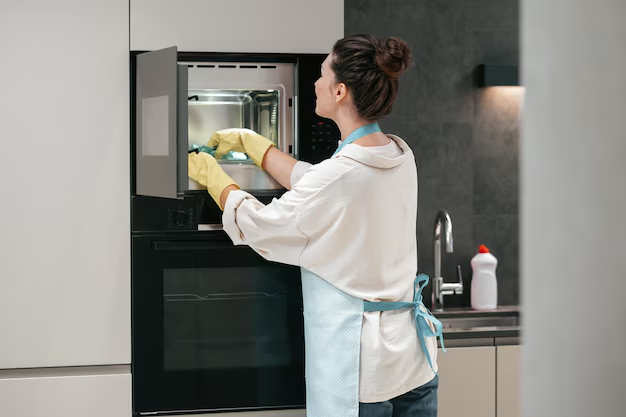Why Your Refrigerator Needs to Be Level: The Complete Guide to Maximum Efficiency
When setting up a new refrigerator, many homeowners might overlook one critical step—making sure it's level. While it may seem trivial, leveling a refrigerator is essential for its performance, longevity, and user experience. Understanding why this step is vital can save you time, energy, and possibly even the appliance itself. So, how does leveling affect your fridge, and what practical tips can help ensure it stays on the straight and narrow? Let's dig in.
The Importance of a Level Refrigerator
✅ Optimal Functionality
A level refrigerator promotes optimal functionality. When your appliance is properly leveled, both the compressor and coolant system work more effectively. An uneven fridge can lead to the coolant pooling in certain areas, making it difficult for the appliance to maintain its temperature. This inefficiency not only reduces its cooling performance but it can also accelerate wear and tear.
Plus Longevity
A properly leveled refrigerator contributes to its longevity by reducing mechanical strain. An appliance that isn't balanced must work harder to maintain temperature balance, placing additional stress on the motor and other components. Over time, this can lead to premature breakdowns and costly repairs.
🍎 Food Preservation and Efficiency
A level fridge facilitates better air circulation. Enhanced airflow keeps your food fresh longer, ensuring that cooler air reaches every corner of the appliance. This efficiency in cooling also means less energy consumption, leading to lower utility bills. An unleveled refrigerator might see some sections colder than others, affecting food quality unequally.
Safety Concerns
For safety, a level refrigerator is crucial. An unbalanced appliance poses a tipping hazard, especially if the doors are opened too quickly or if weight shifts inside. Not only does this present a danger to the household, but it can also severely damage the appliance itself.
How to Check for Leveling
Gather Your Tools
Before you begin checking your refrigerator's level, you'll need some basic tools:
- Leveling tool: A carpenter's level or a digital level app on your smartphone will work.
- Adjustable wrench: Useful for tweaking the leveling feet.
- Measuring tape: Handy for confirming that your refrigerator is equidistant from walls and cabinets.
Step-by-Step Guide to Leveling
Locate the Leveling Feet
Most refrigerators have leveling feet or rollers located beneath the front corners. Identify these before you begin.Position the Level
Place the leveling tool on top of the refrigerator to check both the side-to-side and front-to-back alignment.Adjust the Feet
Use the adjustable wrench to raise or lower the feet until the bubble in the level centers perfectly for both axes. This might require several adjustments back and forth.Check Door Alignment
Once the appliance is leveled, ensure the doors align well with the body of the refrigerator. If necessary, adjust the feet further until the doors close smoothly without gaps or uneven overlap.Double-Check
Recheck the level after making adjustments. It's essential to ensure accuracy so the appliance functions optimally.
Common Challenges and Solutions
Uneven Flooring
If the floor itself is uneven, you might face challenges keeping the fridge level. In these circumstances, adding shims under the feet can help stabilize the appliance. Shims, made from wood or plastic, fill the gap between the floor and the fridge, providing additional support.
Stuck Leveling Feet
Leveling feet might sometimes get stuck due to rust or build-up. Apply a lubricant like WD-40 and allow it time to penetrate before attempting to adjust.
Correct Refrigerator Placement
Ensure the refrigerator is positioned correctly in the space allotted. Ideally, there should be at least an inch clearance from the walls on all sides. This spacing allows for proper airflow, essential for the appliance's cooling efficiency.
Beyond Leveling: Additional Setup Tips
Position for Energy Efficiency
Choose a location away from direct sunlight or other heat sources. Keeping your refrigerator away from the oven, stove, or dishwasher minimizes the extra workload on your appliance.
Avoid Overloading
While it might be tempting to stuff your fridge to the brim, proper airflow prevents over-exertion of the cooling system. Leave room between items and avoid blocking fans or vents.
Regular Maintenance
Routine checks on door seals are vital. A seal that's not closing properly makes the refrigerator work overtime to maintain its cooling, which can also impact its leveling over time due to shifting weight balance.
Summary: The Path to a Perfectly Level Refrigerator
🥅 Key Takeaways:
- Leveling Enhances Performance: Ensures optimal cooling and reduces the risk of breakdowns.
- Promotes Safety: Prevents tipping and evenly distributes internal load.
- Saves Energy and Money: Leads to better cooling efficiency and lower utility bills.
- Simple Adjustments Can Make a Huge Difference: Proper tools and techniques can resolve leveling issues.
🔧 Quick Setup Steps:
- Gather a leveling tool and an adjustable wrench.
- Locate and adjust the leveling feet.
- Confirm alignment with the level.
- Consider shims for uneven flooring.
- Ensure proper placement and regular maintenance checks.
Proper leveling is not just a one-time setup procedure. To maintain your refrigerator, revisit its leveling from time to time, especially after moving or adjusting heavy contents. These simple checks ensure longevity, efficiency, and optimal performance, making your fridge more than just an appliance—it's a kitchen partner. So when you roll that fridge into your home, remember: leveling might just be the most critical step for a cool, efficient future.
